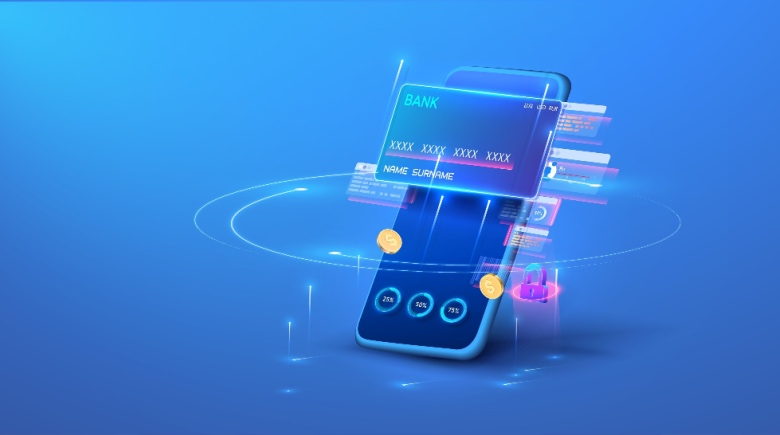As digital security now occupies the minds of everyone and customer expectations continue to accelerate, banks now invest heavily into biometrics—technologies that identify individuals on the basis of their fingerprints or physical or behavioral characteristics. Biometrics, which were once the territory of science fiction films and espionage dramas, are now standard operating procedures in the security of modern banking. From facial recognition to fingerprinting and voice verification, these biometric technologies are bringing about the changes in how we log in to our banking institutions and interact with them.
Why Biometric Authentication?
With dual forms of authentication being increasingly vulnerable, one must wonder how banks can balance security strength against customer-friendliness. Password and PIN authentication is increasingly becoming a liability because they can be reused or are just too simple. The only thing that can save banks from having it is two-factor authentication.
Biometric verification is an excellent proposal. It is easier and less hassle for banks to simply and more easily protect identities than relying on bodies that are one-of-a-kind things you are and not things you have.
Types of Biometric Authentication in Banking
Some of the most common biometric techniques used in banking are as below:
- Fingerprint Recognition
Fingerprint scanning was one of the earliest biometric technologies that achieved mass acceptance. It is quick, efficient, and has already been included in most smartphones. It is used by banks for opening mobile banking access, authorizing payments, or verifying identity at ATMs.
- Face Recognition
This is mostly employed today in any phone apps. Facial recognition uses a software program wherein facial points are followed and matched to its stored data. It’s a no-contact, easy-to-use application available on just about all of the more up-to-date smartphones and tablets.
- Voice Recognition
It checks voiceprints, tone, and rhythm. Some banks use it for customer calling or user authentication on mobile. Very useful for blind clients or those with limited disabilities in contrast to the rest.
- Iris and Retina Scanning
Less common and very expensive and needed more infrastructure, iris scanning is very accurate. This application is meant for very high-security applications in banks and financial houses.
- Behavioral Biometrics
This application looks at how users interact with machines—typing speed, swipe pattern, mouse movement, etc. In addition, the application also works silently behind the scenes to detect anomalies and prevents fraud.
How Banks Implement Biometrics
Most major banks worldwide already use biometrics in their services:
Wells Fargo and Bank of America have introduced mobile logins based on facial recognition or fingerprints.
HSBC has launched voice customer service authentication in various countries.
JP Morgan Chase has invested in behavioral biometrics for securing transactions better and detecting fraud in a better way.
In India, Aadhaar has been a biometric identity scheme for citizens, inspiring banks to open accounts instantly and provide digital authentication to millions.
Digital banks and fintechs have also taken the front line. Revolut, N26, and Monzo are among the organizations that have captured biometric authentication as one of the key features in customer journeys, especially in onboarding and validation of transactions.
Benefits of Biometric Banking
- Increased Security
More difficult to steal or forge than passwords, biometrics are derived from physical attributes and are, consequently, far more resilient against identity theft and impersonation.
- Frictionless Experience
There is always an assumption that biometric authentication is quicker and simpler because there would no longer be any need for memorizing a string of passwords but just a need to look at something or touch it.
- Fraud Prevention
Behavioral biometrics can automatically authenticate or flag unusual behavior at any moment of the day or night, without ever interfering with authentication licensee users’ experience.
- Cost Savings
Over time, there will be reduced costs due to biometric technology’s effects on password reset costs, call center volume, and lowering fraud remediation expenses.
- Fits with Regulations
The same biometric data banks that are used to comply with regulations of the EU like PSD2 are also used globally for KYC/AML.
Challenges and Risks
Various benefits have come with biometric banking; yet, serious challenges have certainly occurred in this venture.
Privacy and Data Security
Biometric data is very sensitive information. Most importantly, it cannot be changed when compromised, as is the case with passwords. Banks have security measures in place to safeguard the protection of storage, encryption, and other access to similar information.
Bias and Accessibility
Some biometric systems can be less efficient for some groups. Thus, it becomes increasingly relevant to achieve inclusivity and equity in biometric algorithms.
Technical Shortcomings
Biometric accuracy may fail in darkness, damage, or failure of equipment. Commodity-level systems should include safety nets, such as passwords or PINs.
Customer Trust
Fearing surveillance or manipulation may make some customers shy away from giving their biometric data; hence, assuring the necessary trust through transparency and truth.
The Regulatory Environment
Regulators worldwide are increasing their interest in the biometric information application.
GDPR regulations of the EU consider biometric data sensitive and require the consent of the individual before beginning processing.
For instance, in this specific case, several US states have adopted very strict laws, like Illinois’ Biometric Information Privacy Act, all in favor of prohibiting the collection of biometric data.
What Lies Ahead?
Future prospects for biometric banking are indeed promising considering some of the emerging trends of artificial intelligence and sensor technology along with mobile computing, which are to be embedded in biometric authentication.
Multimodal biometrics. Two or more biometric modalities used together to provide extra security, for example, voice and face recognition.
Continuous authentication: Rather than requiring login once, the banks would be continuously authenticating the customer during the session by looking at behavioral traits.
Wearables and embedded tech: Someday, perhaps, wearable banking could be done with smartwatches or even implants.
Banks will move in a thin line between innovation, privacy, security, and customers’ convenience. Those who do it right will reap their competitive reward and yet earn the next level of trust in a trusting digital finance forte.
As digital security now occupies the minds of everyone and customer expectations continue to accelerate, banks now invest heavily into biometrics—technologies that identify individuals on the basis of their fingerprints or physical or behavioral characteristics. Biometrics, which were once the territory of science fiction films and espionage dramas, are now standard operating procedures in the security of modern banking. From facial recognition to fingerprinting and voice verification, these biometric technologies are bringing about the changes in how we log in to our banking institutions and interact with them.
Why Biometric Authentication?
With dual forms of authentication being increasingly vulnerable, one must wonder how banks can balance security strength against customer-friendliness. Password and PIN authentication is increasingly becoming a liability because they can be reused or are just too simple. The only thing that can save banks from having it is two-factor authentication.
Biometric verification is an excellent proposal. It is easier and less hassle for banks to simply and more easily protect identities than relying on bodies that are one-of-a-kind things you are and not things you have.
Types of Biometric Authentication in Banking
Some of the most common biometric techniques used in banking are as below:
- Fingerprint Recognition
Fingerprint scanning was one of the earliest biometric technologies that achieved mass acceptance. It is quick, efficient, and has already been included in most smartphones. It is used by banks for opening mobile banking access, authorizing payments, or verifying identity at ATMs.
- Face Recognition
This is mostly employed today in any phone apps. Facial recognition uses a software program wherein facial points are followed and matched to its stored data. It’s a no-contact, easy-to-use application available on just about all of the more up-to-date smartphones and tablets.
- Voice Recognition
It checks voiceprints, tone, and rhythm. Some banks use it for customer calling or user authentication on mobile. Very useful for blind clients or those with limited disabilities in contrast to the rest.
- Iris and Retina Scanning
Less common and very expensive and needed more infrastructure, iris scanning is very accurate. This application is meant for very high-security applications in banks and financial houses.
- Behavioral Biometrics
This application looks at how users interact with machines—typing speed, swipe pattern, mouse movement, etc. In addition, the application also works silently behind the scenes to detect anomalies and prevents fraud.
How Banks Implement Biometrics
Most major banks worldwide already use biometrics in their services:
Wells Fargo and Bank of America have introduced mobile logins based on facial recognition or fingerprints.
HSBC has launched voice customer service authentication in various countries.
JP Morgan Chase has invested in behavioral biometrics for securing transactions better and detecting fraud in a better way.
In India, Aadhaar has been a biometric identity scheme for citizens, inspiring banks to open accounts instantly and provide digital authentication to millions.
Digital banks and fintechs have also taken the front line. Revolut, N26, and Monzo are among the organizations that have captured biometric authentication as one of the key features in customer journeys, especially in onboarding and validation of transactions.
Benefits of Biometric Banking
- Increased Security
More difficult to steal or forge than passwords, biometrics are derived from physical attributes and are, consequently, far more resilient against identity theft and impersonation.
- Frictionless Experience
There is always an assumption that biometric authentication is quicker and simpler because there would no longer be any need for memorizing a string of passwords but just a need to look at something or touch it.
- Fraud Prevention
Behavioral biometrics can automatically authenticate or flag unusual behavior at any moment of the day or night, without ever interfering with authentication licensee users’ experience.
- Cost Savings
Over time, there will be reduced costs due to biometric technology’s effects on password reset costs, call center volume, and lowering fraud remediation expenses.
- Fits with Regulations
The same biometric data banks that are used to comply with regulations of the EU like PSD2 are also used globally for KYC/AML.
Challenges and Risks
Various benefits have come with biometric banking; yet, serious challenges have certainly occurred in this venture.
Privacy and Data Security
Biometric data is very sensitive information. Most importantly, it cannot be changed when compromised, as is the case with passwords. Banks have security measures in place to safeguard the protection of storage, encryption, and other access to similar information.
Bias and Accessibility
Some biometric systems can be less efficient for some groups. Thus, it becomes increasingly relevant to achieve inclusivity and equity in biometric algorithms.
Technical Shortcomings
Biometric accuracy may fail in darkness, damage, or failure of equipment. Commodity-level systems should include safety nets, such as passwords or PINs.
Customer Trust
Fearing surveillance or manipulation may make some customers shy away from giving their biometric data; hence, assuring the necessary trust through transparency and truth.
The Regulatory Environment
Regulators worldwide are increasing their interest in the biometric information application.
GDPR regulations of the EU consider biometric data sensitive and require the consent of the individual before beginning processing.
For instance, in this specific case, several US states have adopted very strict laws, like Illinois’ Biometric Information Privacy Act, all in favor of prohibiting the collection of biometric data.
What Lies Ahead?
Future prospects for biometric banking are indeed promising considering some of the emerging trends of artificial intelligence and sensor technology along with mobile computing, which are to be embedded in biometric authentication.
Multimodal biometrics. Two or more biometric modalities used together to provide extra security, for example, voice and face recognition.
Continuous authentication: Rather than requiring login once, the banks would be continuously authenticating the customer during the session by looking at behavioral traits.
Wearables and embedded tech: Someday, perhaps, wearable banking could be done with smartwatches or even implants.
Banks will move in a thin line between innovation, privacy, security, and customers’ convenience. Those who do it right will reap their competitive reward and yet earn the next level of trust in a trusting digital finance forte.



